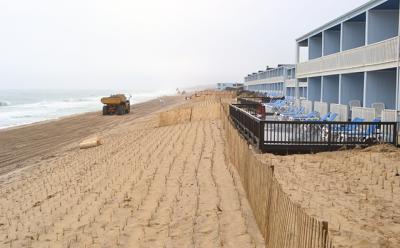Sag Harbor Turf Field Bids Rejected
Sag Harbor Turf Field Bids Rejected

Amid continued opposition from parents and community members to the installation of an artificial turf field at Pierson Middle and High School, the Sag Harbor School Board on Monday rejected two bids it had received from companies trying to obtain a contract to do the work.
Katy Graves, the district superintendent, explained during Monday's school board meeting that the bids were being rejected not because of community opposition but because the bids came in over the monetary threshold that had been approved for the project by community vote in November 2013. Landtek Group bid $1,935,000, and Laser Industries bid $2,243,000. The original project was approved at $1,620,000.
"You don't get to negotiate. We can only take bids in," Ms. Graves said. "That does leave the bond still open for our board of education to explore moving forward with it."
The board's vote to reject the bids was unanimous. Beforehand, several parents and community members voiced their continued opposition to the synthetic turf field, which has drawn criticism because of the materials that would be used.
Diane Hewitt, one of the parents coordinating a petition to halt the turf field installation, presented more than 630 signatures in the online petition and a paper petition as well. "Now you have the ability to right this wrong," Ms. Hewitt said. "I am humbled by how many people signed on about this issue. . . . We know you will do the right thing. The health of all our children, friends, neighbors, and community is very at much at stake."
Kevin McAllister, a member of Defend H20, a water quality advocacy group, said a synthetic turf had the potential to negatively effect water quality in the immediate area around the school, particularly when it comes to stormwater runoff.
When pressed for an explanation of the district's next steps on the turf field, Ms. Graves said the school board "will have open discussions" and that the decision is ultimately in the board members' hands.
"They need that time" to evaluate the information, she said. "They only can have conversations at meetings."









